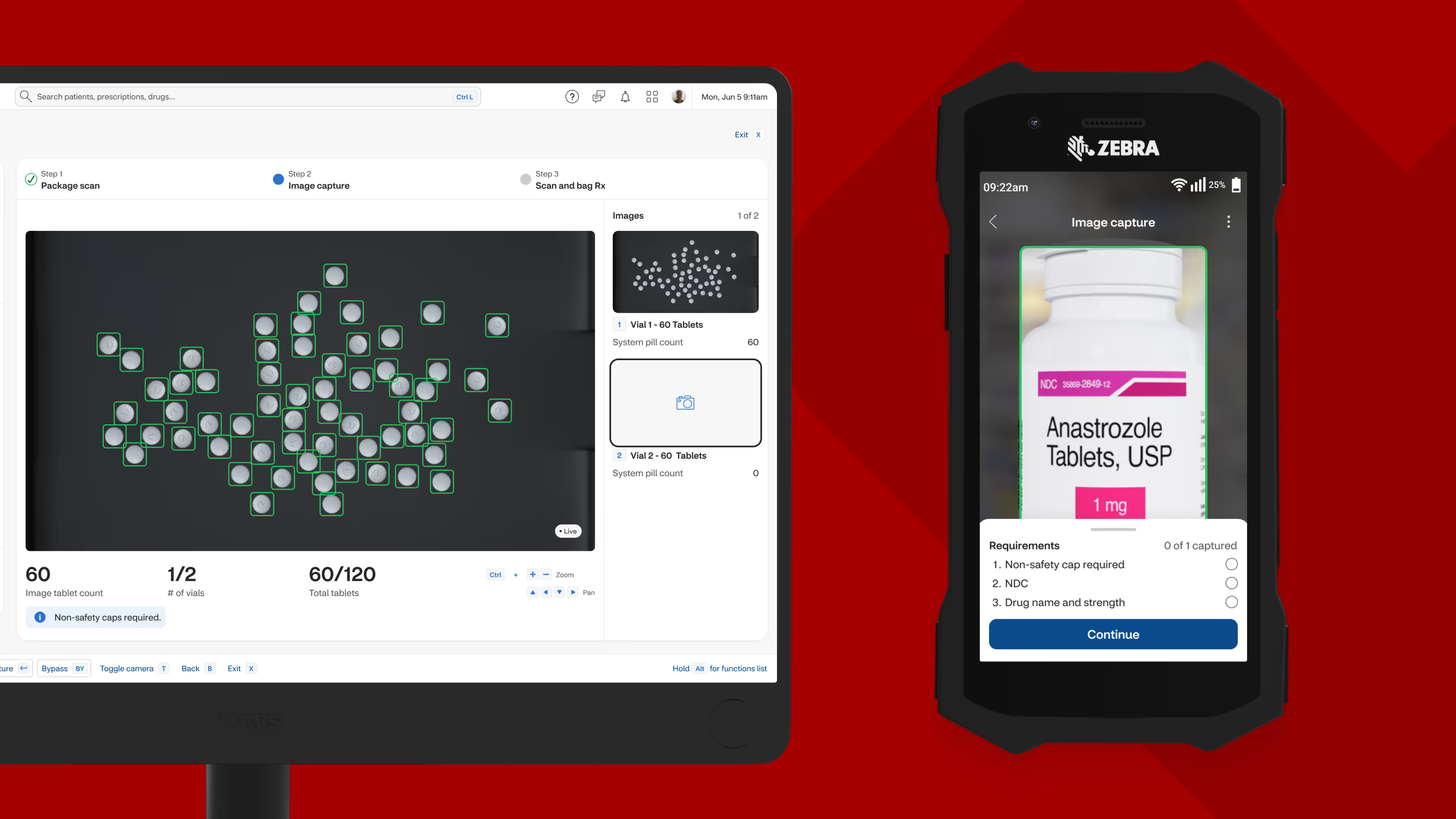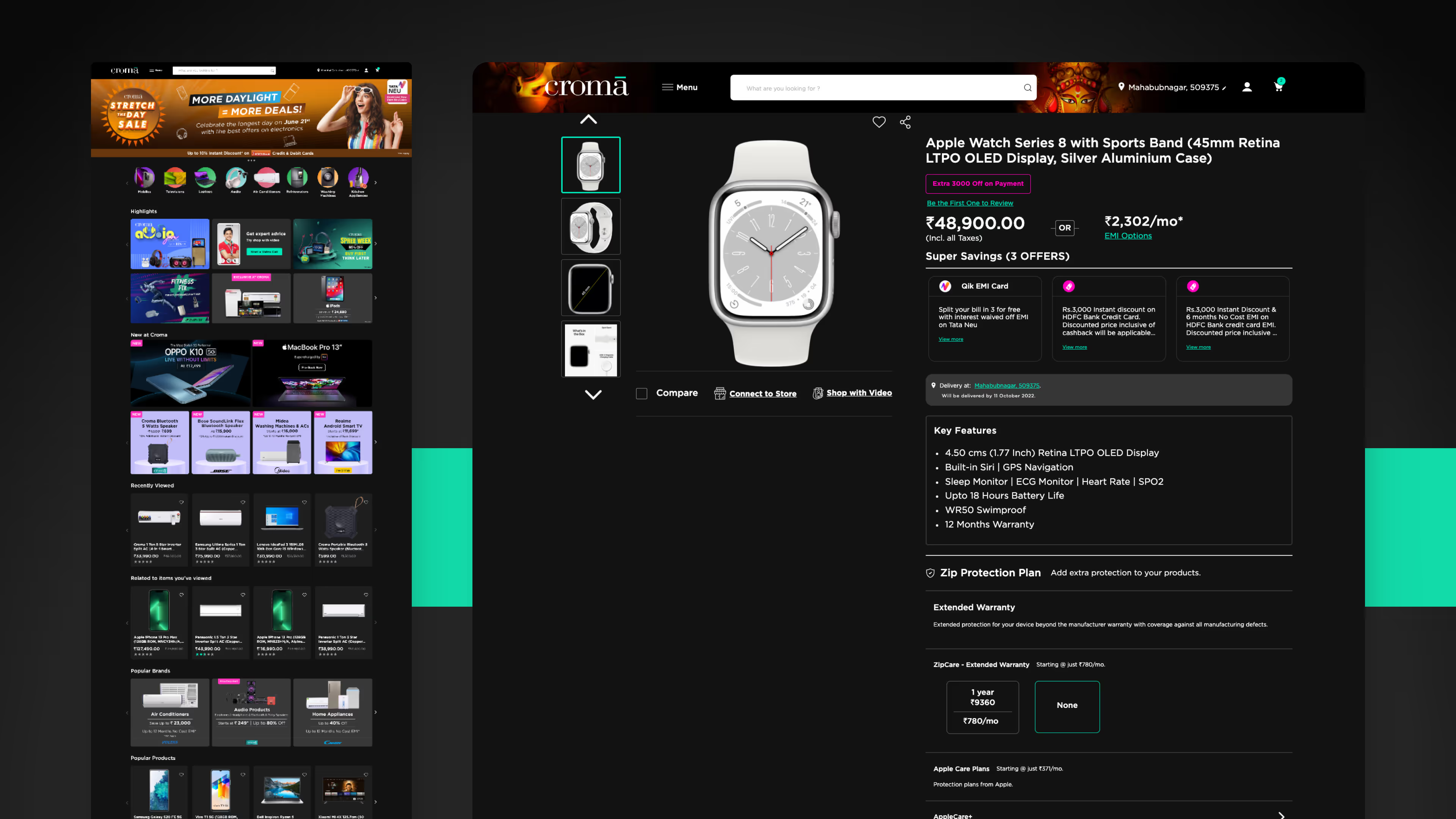
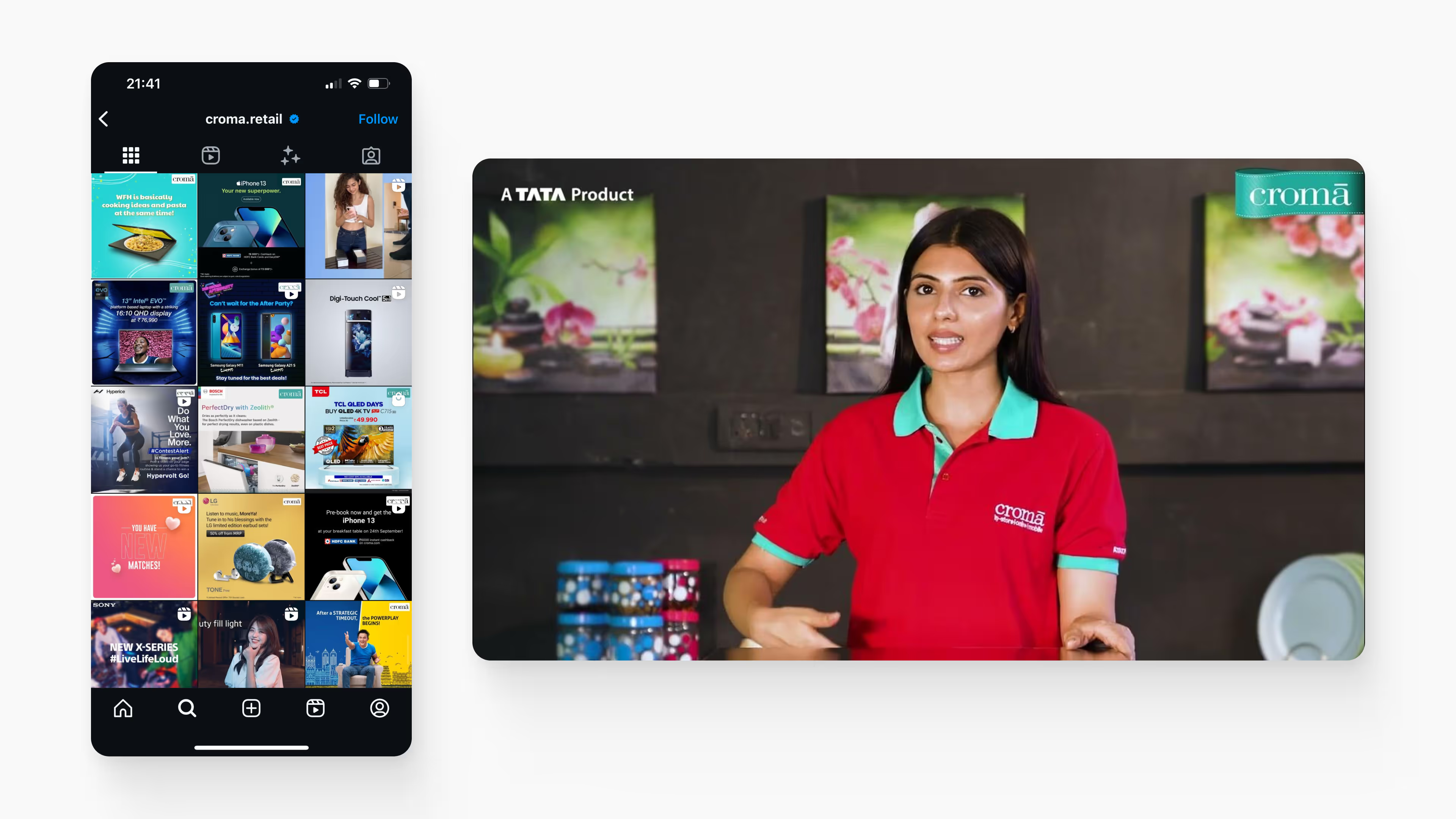
Cromā is India’s first and most trusted consumer electronics and consumer durables (CECD) retail store with over 500 branches across more than 130 major cities. Cromā is a predominantly brick-and-mortar business but with the ecommerce landscape of India changing rapidly, Cromā risks falling behind.
1 Design Director, 1 Associate Designer, 4 Product Designers, 1 Motion Designer, and 1 Project Manager.
I was a Product Designer on this project for the full duration. I worked closely with the Associate Designer during the research phase to prepare workshop and interview material. We also worked closely to synthesise our findings into the customer journeys we delivered.
"We're at risk of getting lost in the crowd"
With the rise of online-retailers like Amazon and Flipkart and an extremely crowded CECD market, the ever changing landscape of India, and a digital revolution, Cromā were getting lost in the crowd.
Competing on the same terms as online-retailers and local competitors forces Cromā away from their values. Consequently, CECD retailers are becoming homogenous, forcing a focus on price as the differentiating factor. India’s growing young generations are underserved by Cromā but essential for growth and to remain relevant in a crowded space. Whilst implementation of new technologies is slow, putting Cromā at risk of falling behind.
Differentiate Cromā by creating a best-in-class omnichannel shopping experience
To bring Cromā to the foreground we needed to find a way to differentiate Cromā from its competitors. The success of this project would be based on our ability to achieve three things:
18+ interviews and workshops, desk research, SWOT analysis and benchmarking
We began with learning about the business, market, and customers. We conducted over 18 interviews and workshops across the business, as well as our own research using reputable sources such as McKinsey. Cromā’s existing channels then underwent a SWOT analysis before we compared them to competitors in India. The final step was to gather benchmarks from other retailers.
We took all of our learnings and synthesised them into three deliverables: key opportunities, personas, and customer journeys.
Why
How
Why
How
Why
How
Why
How
Why
How
Why
How
Four personas – one typical, three to aspire toward
Building on former research by Cromā and our findings from discovery we defined four personas that would form the foundation of our customer journeys. Each persona was tweaked in collaboration with key stakeholders.
Our four personas were designed to cover Cromā’s typical customer (Deepak) and the different target audiences that we aspired towards as this was a future-thinking project. As well as defining their characteristics, goals, expectations, touchpoints, and the type of products these customers are typically looking for. This helped us to define the customer journey for each and find innovative ways to support them in their search for such products.


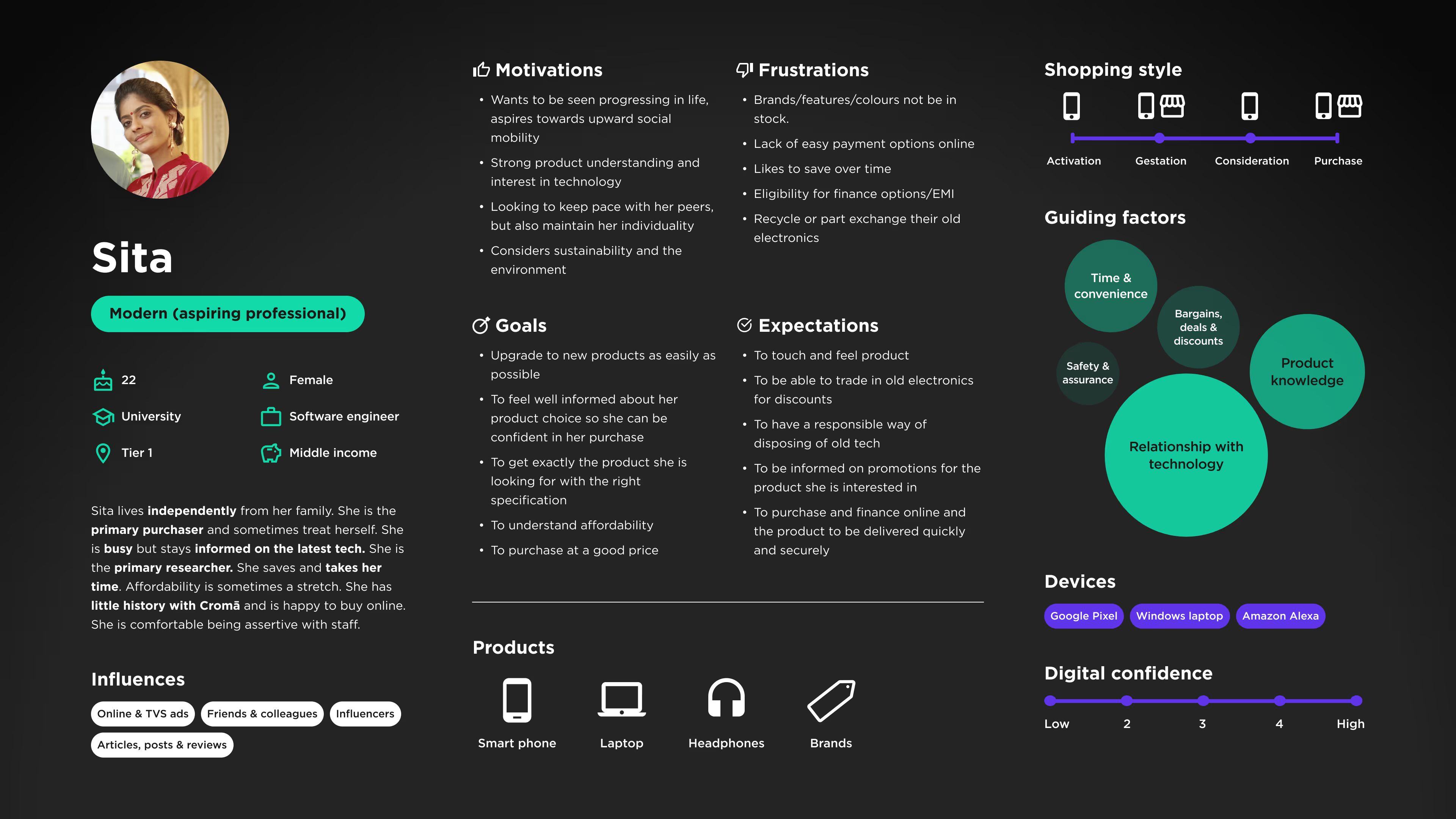
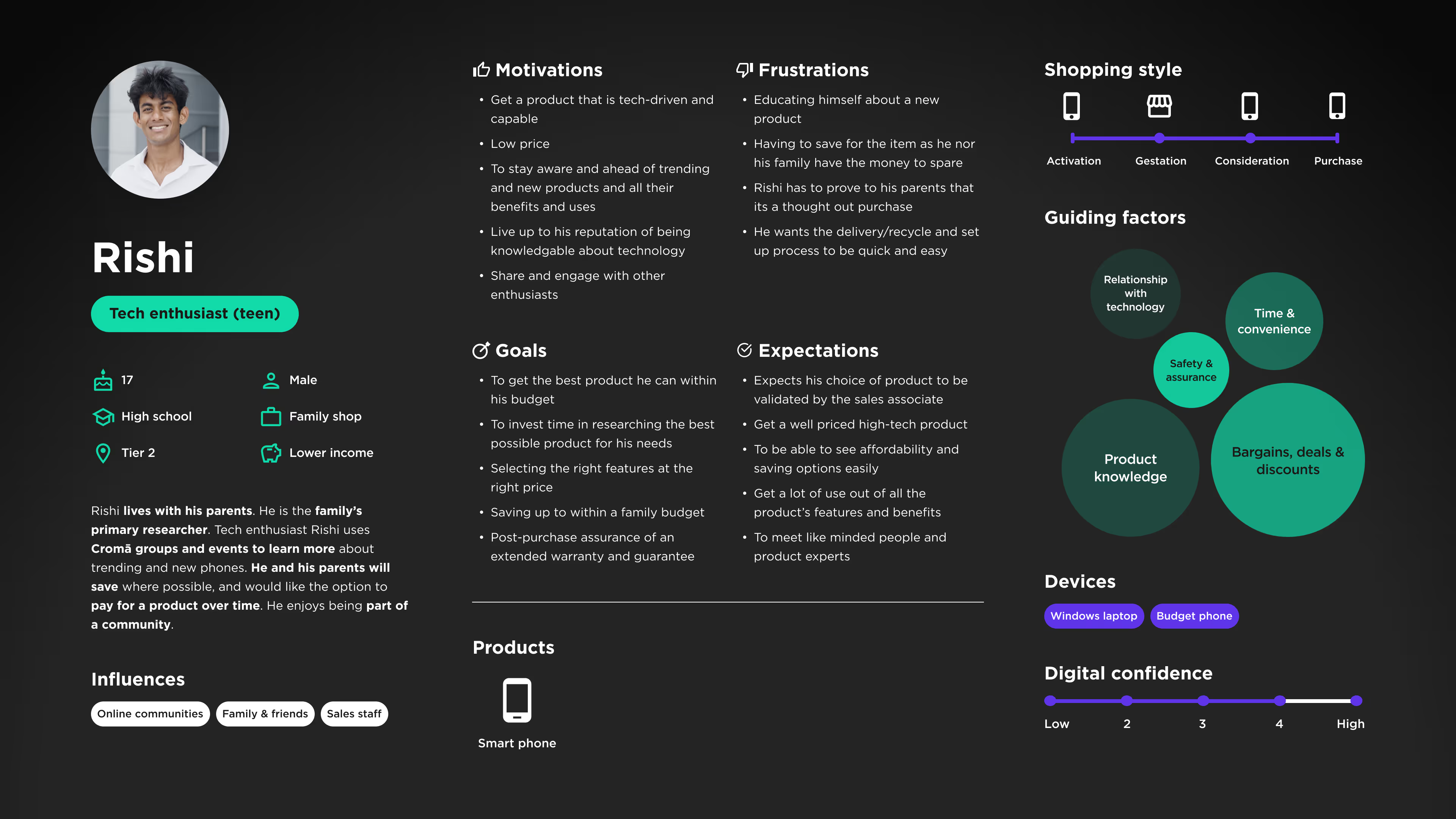
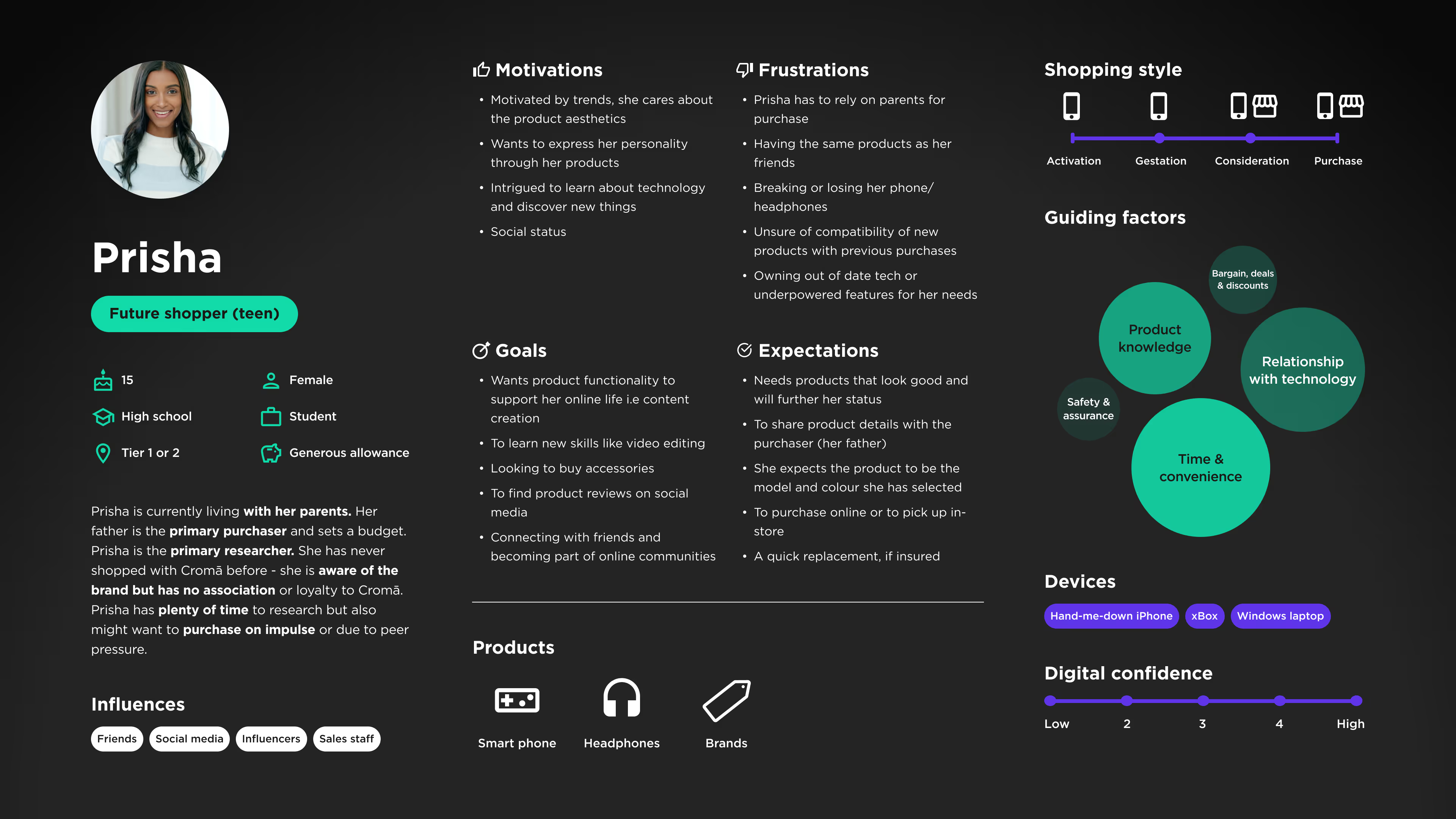
Unearthing opportunities by exploring each persona's lifecycle with Cromā
Finally, we developed multiple end-to-end customer journeys for each persona, exploring the various products of interest to them. We mapped each stage of the journey and included user goals, feelings, touchpoints, and the channels used. This allowed us to see pain-points and opportunities more clearly and helped us to focus our attention where we could provide the most value to that persona, purchasing that product, at that stage, and on that channel.
These customer journeys were then refined into our fiver hero journeys which would be more focused, with each persona having a focal product across certain stages.
Translating Cromā's values into a design language
To establish our experience principles we conducted a workshop with our key stakeholders, the CEO and COO, to identify words that describe Cromā’s values. We then collaboratively honed these down to three principles that we’d use to guide us through the design process – creating a shared vision for how Cromā would show up across all channels.
Pushing Cromā into the future
Having laid the groundwork we began ideating. Our research surfaced many opportunities and inspired many more. We devised 60 different concepts utilising innovative technology where possible to push Cromā forward into the future.
Each concept sheet summarised the concept, its goal, and represented a product, a feature, a service, or an experience. Finally, we conducted a prioritisation exercise with key stakeholders, arranging each concept into the “must-have, should-have, or could-have” bucket.
Defining the visual language
To establish a fresher visual identity for Cromā, we began taking inspiration from other brands and formatting these into moodboards. Each designed to provoke an overall feeling or sense.
These were then run by key stakeholders, with a direction set somewhere between ‘Vibrant’ and ‘Light.’ From here the approach was explored further in mock screens and design details before applying it.
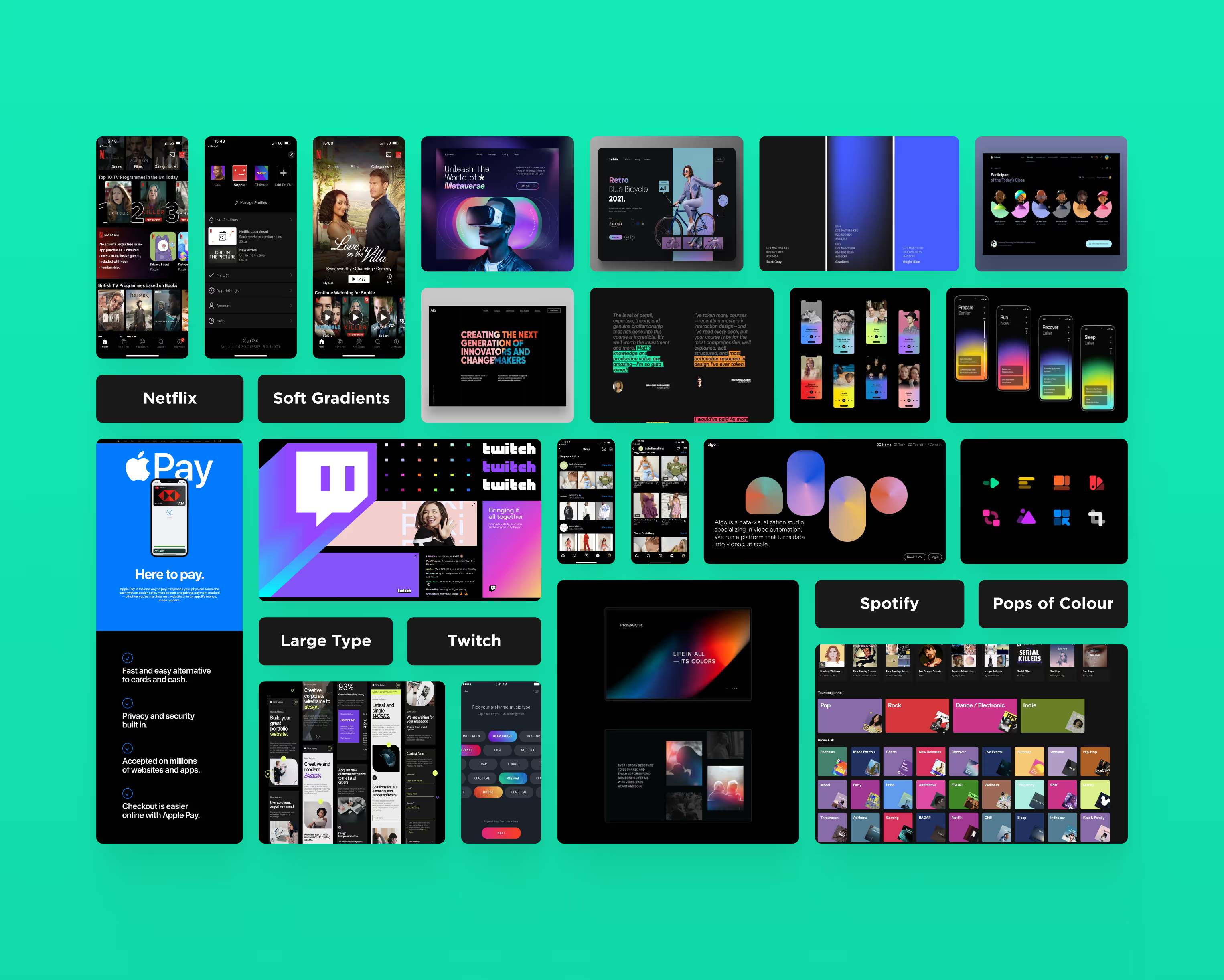
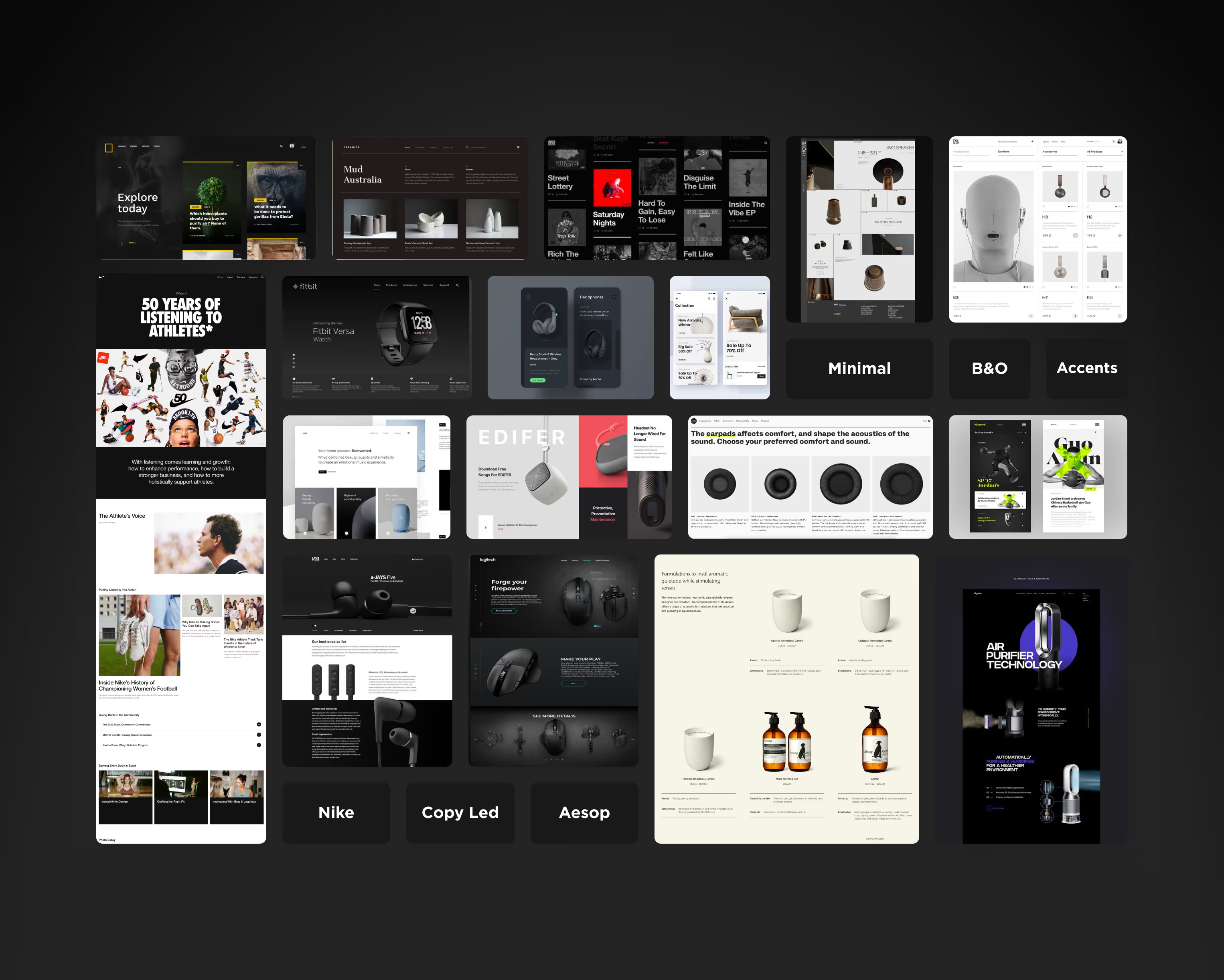
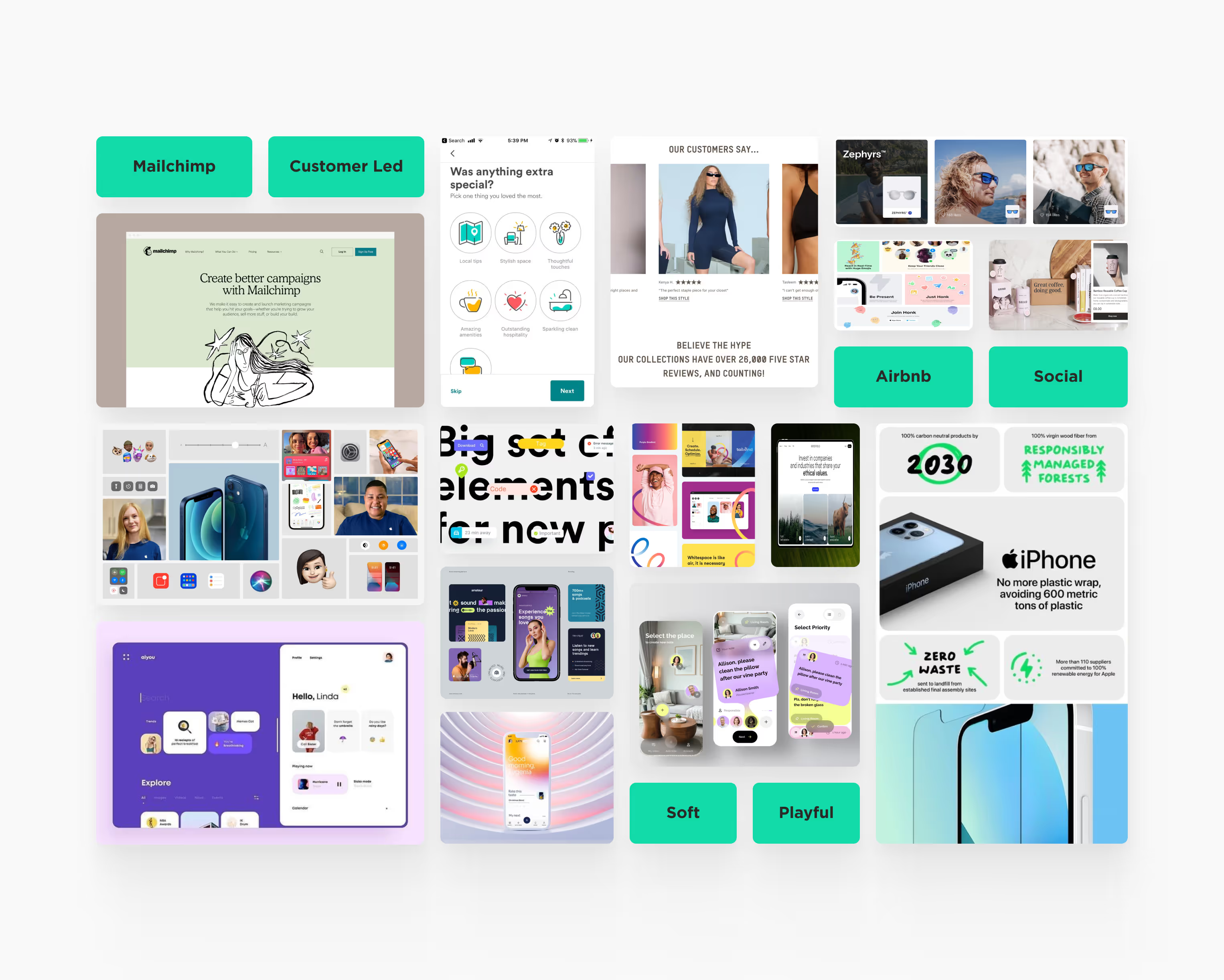
Each journey – articulated through motion
Our primary deliverable was five hero journeys. Each hero journey was focused on a different persona purchasing a different product and covered different parts of the customer journey from awareness through to ownership.
We utilised the most appropriate channel for each part of the hero journey, applying different concepts where applicable and designing flows to unlock the most value. Every hero journey was complimented by a video, bringing the vision to life and providing more context to the overall journey.
Weekly presentations and a 24 hour feedback cycle
Each week we would present our week's findings or designs to the CEO and COO. Feedback would be taken and discussed live on the call with additional feedback gathered overnight for a follow up feedback call.
We would then implement and iterate on the previous week’s work, re-presenting this work again if required. Due to the conceptual nature of the project, user testing wasn’t available to us but this is something I'll discuss in my reflections.
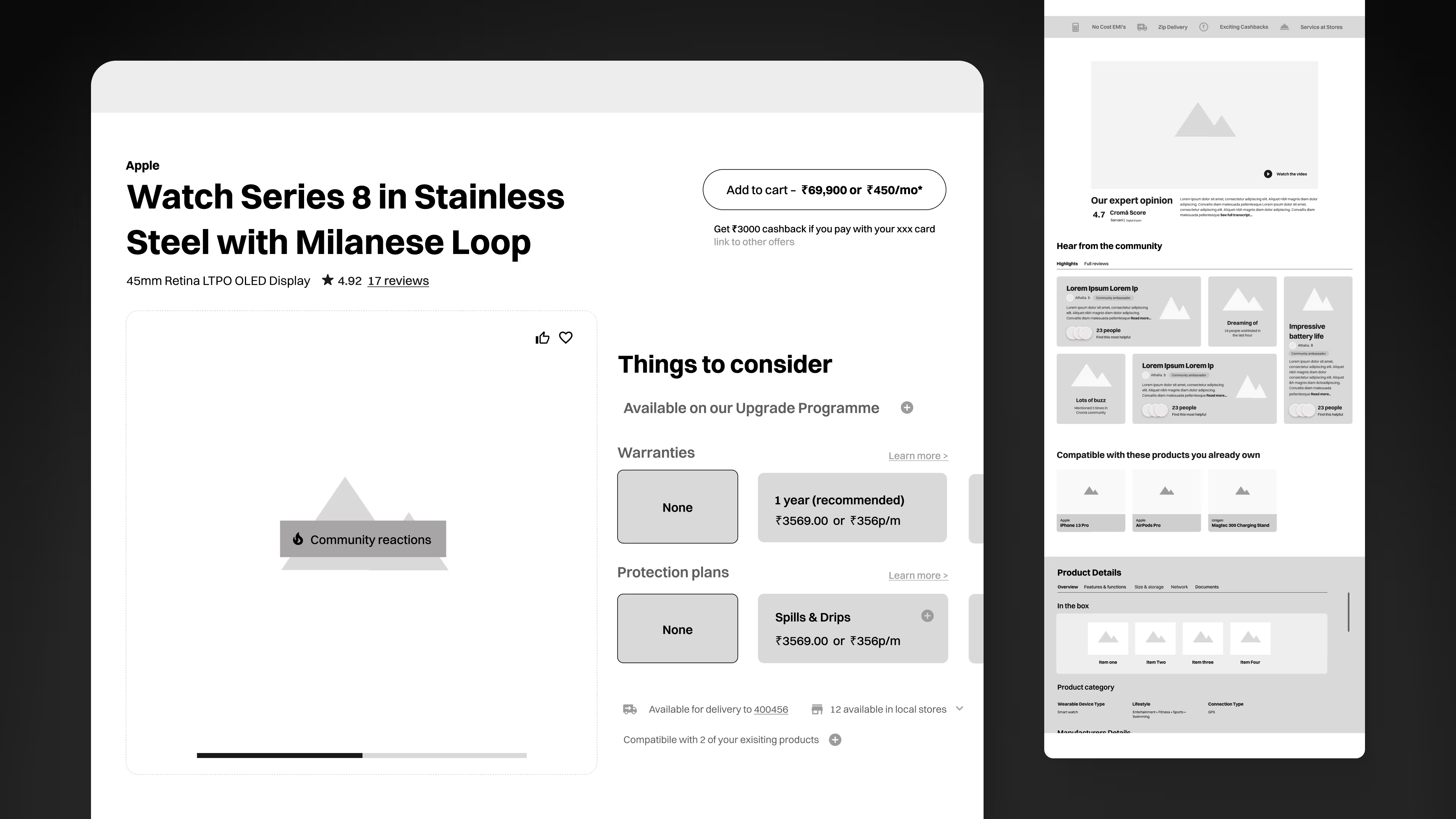
275+ screens, 5 aspirational hero journeys, and 1 market leading omnichannel vision
Cromā are currently in the process of rolling out changes to croma.com based on our vision. Spec selection options, a sticky CTA, addable value added services, and product combos have been added to PDPs. The category page has been completely rebuilt to our designs. Elements of our brand revamp are also starting to appear throughout croma.com.
My largest contributions to the design efforts in this project were to croma.com, playing particularly well to my strengths given my background in ecommerce. My thorough approach was invaluable during the extended research phase of this project. It helped to ensure we didn’t miss anything instrumental, ensuring our customer journeys were comprehensive and consequently, extremely effective.
The scope of the project was constantly in flux, with it initially being focused on a 5 year timeline. As the project progressed the focus shifted towards improving the ecommerce site instead of the wider ecosystem. Because we hadn’t scoped for an ecommerce site design we ended up spending a large amount of time in the details, and therefore less focus went towards the wider ecosystem elements. A clearer brief would have allowed us to approach the project differently from the start, allowing us to focus our efforts more and to fully explore and realise a complete ecommerce site redesign.
Trying to grasp and understand the complexities of a country as vast and complex as India was extremely difficult – especially as we were 7195 km away! Being able to research and speak to our key stakeholders and other Cromā employees online was invaluable, but a visit to India with its differing regions, languages, religions, and socio-economic paradigms would’ve helped us get a far better understanding. As well as allow us to speak to actual customers to hear their perspectives first-hand.
